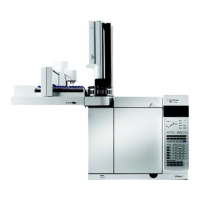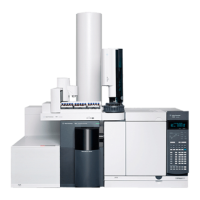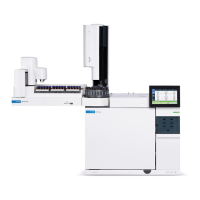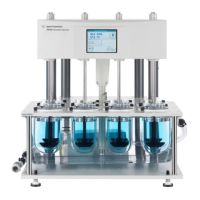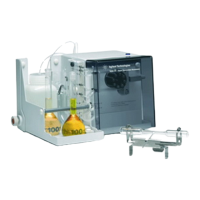Columns and Oven 4
Advanced Operation Manual 163
To backflush using a ramped flow program
In this case, the backflush occurs as part of the run, so the
detectors continue to collect data. During the backflush, you
may wish to turn off data collection in the data system.
1 Verify that all columns are properly configured.
2 Enter all method parameters for the analysis: sampler
parameters, inlet parameters, oven temperature profile,
detector flows and temperatures, and so forth.
3 Program the oven for the backflush.
• Include any temperature profile needed for backflush.
• Set the total run time to include sufficient time for
backflush.
4 Program the flow ramp for the column installed between
the inlet and the CFT device. After the last analyte elutes
or after reaching the last temperature of interest,
program a fast ramp with a final flow that is negative.
5 Program the flow ramp for the primary column installed
between the CFT device and the detector. Typically hold
at the method’s final value for the backflush duration.
If you turned off data acquisition in a data system during
backflush, remember to turn it on again at the end of the
run.
Backflushing using a switching valve
Backflushing is done using a column switching valve
controlled by the Run Table. See “Run Time Programming”
on page 12.
The valve is plumbed as follows:
• Position 1 Carrier gas flows through the column to the
detector. This is the normal flow path.
• Position 2 Carrier gas flows through the column toward the
inlet, removing components on the column through the
inlet vent line.
To avoid damage to an MSD, Agilent strongly recommends setting
up backflush as a post run event, not as part of a ramped column
program. If you still choose to backflush as part of a run, be very
careful that the flow into the MSD does not exceed the limits of the
vacuum pump.

